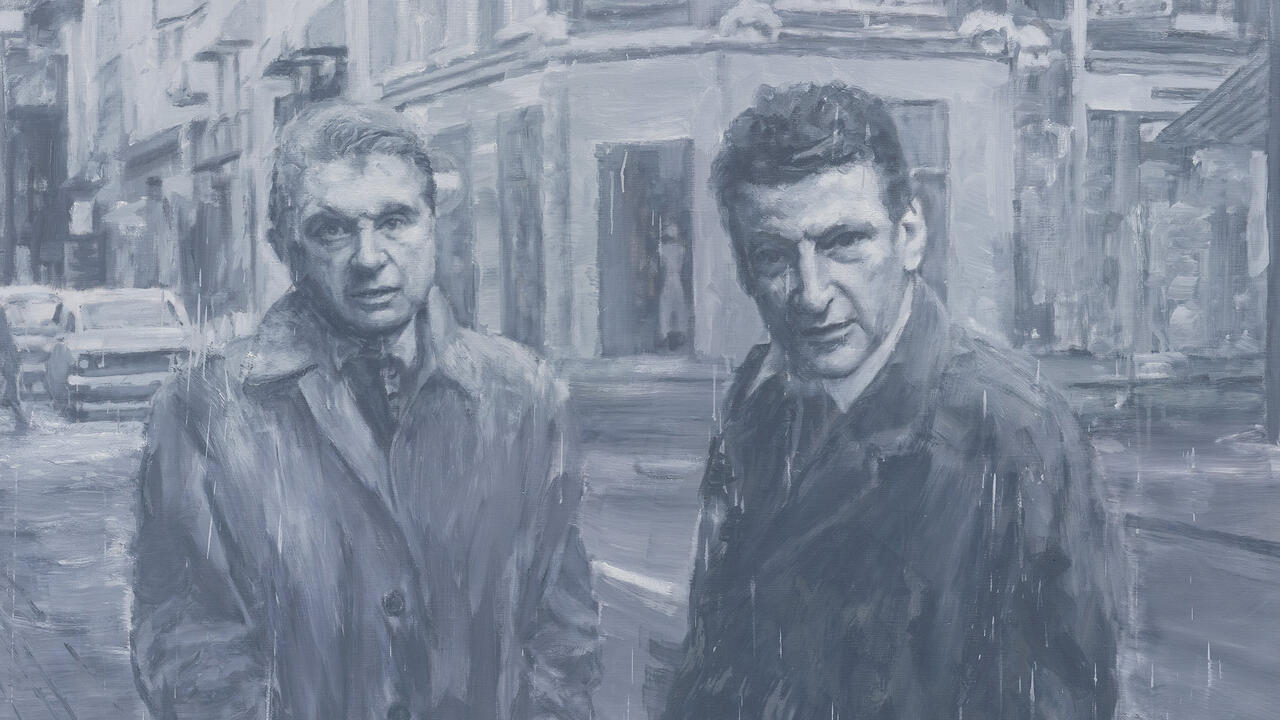Pamela Golden
The clutch of pertinent terms for Pamela Golden's exhibition is announced in the small accompanying catalogue. 32 people have contributed texts - sometimes their own, but more usually snatches from a chosen work of another - on the themes of 'fragmentation, alienation, exile or beauty.' Situation normal, maybe, except that here is no mere commentary on the quality of contemporary life. Golden accepts these categories not only as subject matter, but also as a working method. What can one do when making art other than to select something, separate it out for particular attention, work on it in its isolation to the point where it becomes strange, and then attempt to go beyond that in an effort to reintegrate it into the flow? 'Advice for the Injured', these works are collectively called: how to become whole, how to make do and get by, how to make it better, stick it back together again and get it working.
Source material for these latest works is a large collection of old glass lantern slides assembled from a number of places. That this method of storage and transmitting information is now obsolete is emphasized by the fact that in one instance the slides were rescued from a skip, having been already jettisoned by their owners as worthless. The technology is antiquated and the subjects depicted are, because of the time difference if nothing else, almost irretrievably remote. In her work, Golden tries to find ways of reconnecting what these slides contain with a contemporary life and, moreover, to do so by underscoring the feints, tricks and habits of thought and belief we might bring to bear in such an exercise. The slides she has used document family life: school sports day; individuals or groups seen in the garden, often with the house as a backdrop; more formal events which, in this context, intimate the participation of a family member or simply the occasion of a day out. There are no wide vistas, everything is close in, domestic, intimate, detailed, and there is enough in this detail - the porch of a house, the front end of a car, the corner of a garden, a child's toy, the subject's clothing, the formal or informal way in which groups pose for the camera - to make it clear that the images have been drawn from several countries.
Golden's method, as with previous series, is to work onto a selected, unenlarged portion of the image. In this case, since the originals are slides rather than photographic prints, a same-size colour Xerox is taken and used as the foundation. With successive layers of encaustic, Golden traces and retraces the image. A meticulous reiterative process which sometimes allows slight deviations, simplifications or alterations to occur. Memories blur, accounts differ, assumptions cloud interpretation. When finished, each painting, the largest dimension of which in no case exceeds the length of a little finger is mounted in its own frame. These frames comprise a substantial square panel of white-coated MDF in the centre of which is a much smaller square well. This depression, where the painting sits, is glazed flush with the surface of the panel. In relation to the minuscule fragments of encaustic on paper, these constructions provide a context which is architectural as much as painterly. That they appear to operate as so many discrete environments as well as functioning as a series of pictures is emphasized by one's inability to retreat and take in the whole show at once, something that one can normally do at Gimpel Fils. We are directed by the installation as well as the scale of works to address each one separately and intently since Golden has screened off the built-in bench which faces the main wall of the gallery. This has the effect of turning the space into a broad corridor, up one side and down the other of which one must, perforce, travel.
For those familiar with the gallery, then, Golden's close scrutiny of the evidence of private life has been offered for public consumption in a deliberately formalised manner. As if to confirm this she has included a bonus, Dado, which upsets the consistently face-to-face approach demanded by the other 16 works and jokingly draws the gallery back towards the private sphere by turning it into a domestic interior. The temporary screen runs off a short section of wall that is part of the permanent architecture of the gallery. To this, at picture rail rather than dado height, Golden has attached a length of moulding. Looking up, you can see that resting on this, and propped against the wall, are half a dozen small paintings of birds' heads. The birds are not flying, but they might.

















